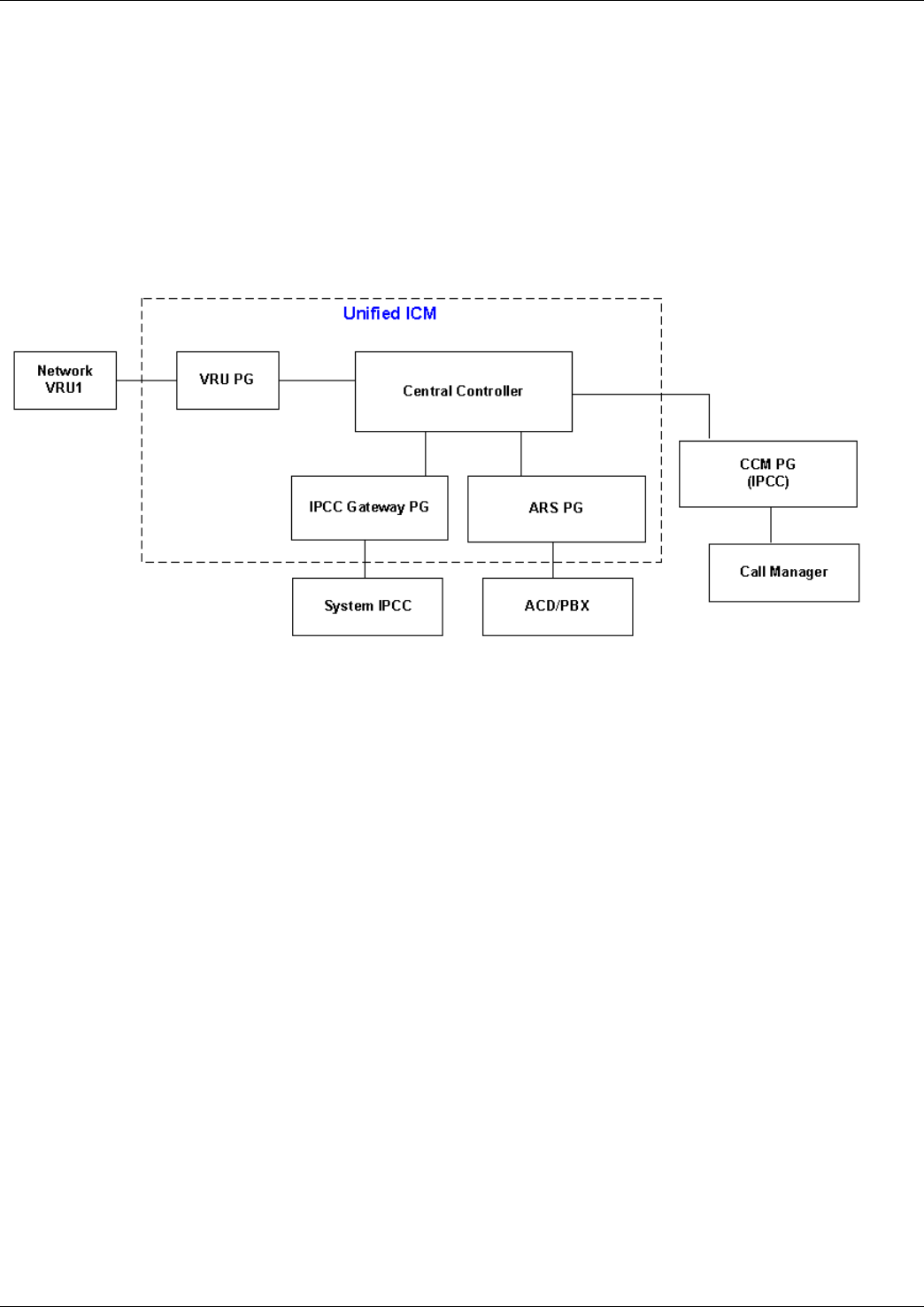User Guide
Table Of Contents
- Cover Page
- Table of Contents
- List of Figures
- Figure 1 : Central Controller
- Figure 2 : Peripheral and Peripheral Gateway
- Figure 3 : Administrative Workstation
- Figure 4 : WebView Server
- Figure 5 : Diagram of System Components
- Figure 6 : ICM Data Environment
- Figure 7 : Real-Time Data Moves to AW Local Database
- Figure 8 : Icons for Graphs and Tables
- Figure 9 : Deployment with Enterprise Routing
- Figure 10 : Sample Script for Enterprise Routing
- Figure 11 : Script Example for Agent Level Routing
- Figure 12 : Sample Script for Hybrid Routing
- Figure 13 : Agent State and Task State Relationship
- Figure 14 : Sample Routing Script for Information Gathering and Queuing
- Figure 15 : Call Type Data for Calls that Abandon after Call Type is Changed
- Figure 16 : Call Type Data for Calls that Abandon before Call Type is Changed
- Figure 17 : MultiChannel Options
- Figure 18 : Agent State Hierarchy
- Figure 19 : Call Abandoned While On Hold Scenario
- Preface
- Chapter 1: System Architecture and Reporting
- Chapter 2: Understanding Reporting
- Chapter 3: Understanding Routing and Queuing
- Chapter 4: Planning for Reporting
- Planning for Reporting at Unified ICM Setup
- Planning for Your Deployment
- Planning for Configuration and Scripting
- Planning for Agent Reporting
- Planning for Call Types
- Planning for Custom Reporting
- Planning for the HDS
- Planning for Enterprise Routing and Enterprise Reporting
- Planning for Service and Enterprise Service Reporting
- Planning for Service Level
- Planning for Short Calls
- Planning for Skill Groups and Enterprise Skill Groups
- Planning for Transfer and Conference Reporting
- Planning for Translation Routing
- Planning for Unexpected Scripting Conditions
- Planning for VRU Application Reporting
- Chapter 5: Reporting on Agents
- What Agent Data do you Want to See?
- Reporting on Agent Activity in Skill Groups
- Reporting on Agent States
- Reporting on Average Speed of Answer for Agents and Skill Groups
- Reporting on Agent Logout Reason Codes
- Reporting on Agent Not Ready Reason Codes
- Reporting on Agent Task Handling
- Reporting on Agent Performance for Outbound Option Dialing Campaign Calls
- Reporting on Agent Redirection on No Answer
- Reporting on Agent Call Transfers and Conferences
- Reporting on Agent Teams
- Chapter 6: Reporting on Customer Experience
- Chapter 7: Reporting on Operations
- Chapter 8: Reporting in a MultiChannel Environment
- Chapter 9: Sample Call Scenario
- Chapter 10: Reporting Implications of Data Loss and Component Failover
- Chapter 11: Troubleshooting Report Data
- Appendix A: List of All Unified ICM Report Templates
- Appendix B: Reporting Entities and Databases
- Appendix C: Configuration and Scripting for Reporting
- Configuration for Agent Reporting
- Configuring Call Types
- Configuration and Scripting for Conferences and Transfers
- Configuring Services and Enterprise Services
- Configuring and Scripting for Service Level Threshold and Type
- Configuring Short Calls
- Configuring Skill Groups and Enterprise Skill Groups
- Configuration and Scripting for the VRU
- Configuring Translation Routes
- Index

The call treatment is done through the use of Call Types and associated scripts. It is the Unified
ICM in this case that controls queuing and chooses the agent required to handle the call. The
Unified ICM software provides the ACD functionality and the ACD itself becomes a simple
PBX that connects a call to an agent as directed by the Router.
In the illustration below, the Unified ICM is connected with two ACDs using ARS PGs. In this
deployment the Unified ICM software always controls the queuing; hence the enterprise queue
statistics are affected. The ACD is used as the telephony platform to queue the calls.
The Network VRU1 can be any Service Control VRU that can be used to provide initial call
treatment and serve as the telephony platform for queuing calls across all call center ACDs.
VRU1 can also be used for information gathering and self-service. There might also be a
premise-based VRU or a Virtual VRU at the ACD/PBX.
In that case, the premise-based VRU or Virtual VRU are also controlled by the Service Control
Interface (SCI) of the ISAGI protocol so that Unified ICM retains control of the queuing.
For additional information on ARS PGs, see the ARI Deployment Guide for Cisco ICM Enterprise
Edition
Routing and Scripting
The following routing capabilities can be provided in this deployment:
•
Site Based Routing:The Unified ICM software, using the Unified ICM routing capabilities,
can use real-time reporting statistics gathered from the different peripherals (ACDs) to make
routing decisions to route calls to the site that is best suited to answer the call.
Site selection can be scripted using real time Skill Group metrics only provided by the
Peripheral Gateway (PG). Several metrics can be used to make the selection such as Agent
availability, CallsInProgress, CallsInQ, and Avg.HandleTime.
Reporting Guide for Cisco Unified ICM Enterprise & Hosted Release 7.2(1)
50
Chapter 3: Understanding Routing and Queuing
Deployments with Agent Level Routing










